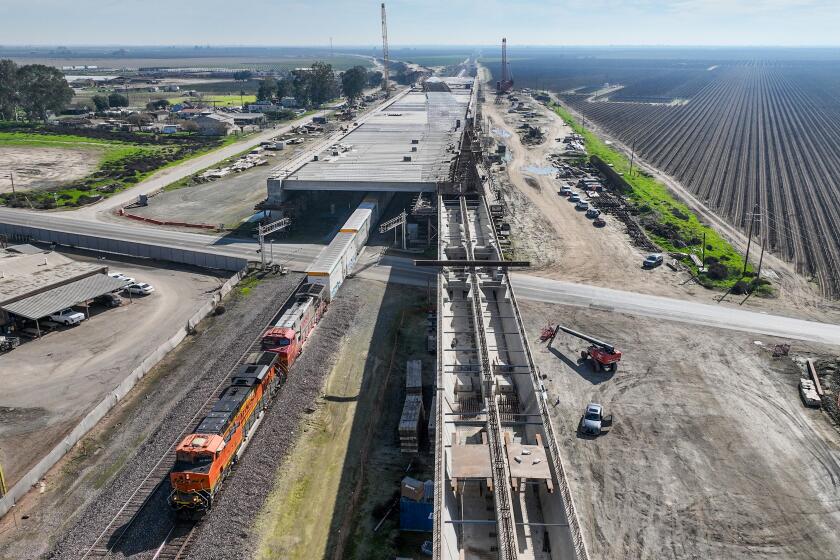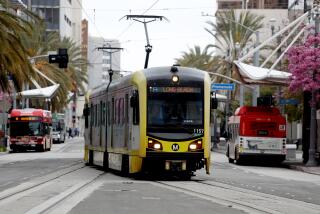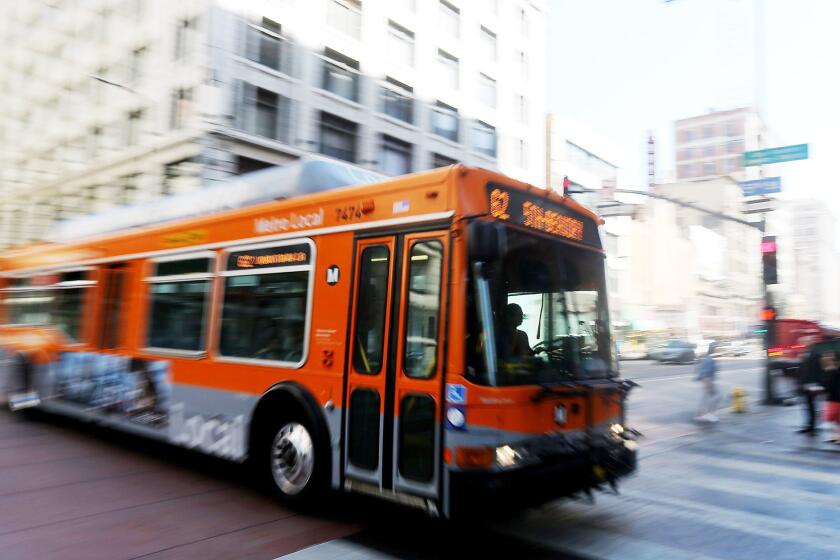California’s high-speed rail leaders sound alarm over project’s financial future

- Share via
- Board members who oversee the California high-speed rail project raised concerns over the financial commitments.
- Rail CEO says project could take roughly 20 years to complete if private sector can be utilized.
As California’s High-Speed Rail Authority awaits word from the Trump administration over its future support for the train, leaders who oversee the project sounded the alarm about its financial viability.
The authority’s board of directors voted Thursday to approve contracts for the development of Central Valley station designs and to solicit and approve construction bids for the Fresno station. Ahead of the votes, board member James Ghielmetti raised concerns over the potential loss of funds from the Department of Transportation and the risk of moving forward on payment commitments when federal funding is in jeopardy.
“I’m very nervous about receiving the federal funding,” Ghielmetti said. “I want to make sure my fellow board members are aware that if the federal money does not come through, somebody’s got to backstop these contracts.”
Authority staff said that contracts include termination clauses if there isn’t enough money and that contingency funds existed to make up a shortfall if funding fell through. Ghielmetti argued that the termination of any contract would only move the project further off course and stressed that if the goal is to get back on schedule, those funds need to exist.
The board consists of nine members, each serving a four-year term, tasked with approving policies related to the project’s businesses, finances and strategies. Board member Martha Escutia echoed Ghielmetti’s concerns and said that a financial plan needs to be cemented as the board continues to vote on how money will be spent.
High-Speed Rail Authority CEO Ian Choudri said the authority will ask the Trump administration for money, but even if that comes through it needs new sources of funding.
“We are obviously in trouble,” she said.
The Department of Transportation initiated a compliance review of the project in February following calls for an investigation by Republican lawmakers over delays and costs. The review is focusing on a $4-billion promise made under the Biden administration for construction in the Central Valley.
The project, which originally set out to connect Los Angeles to San Francisco via train by 2020, is $100 billion over its original budget and years behind schedule — a problem that rail experts have said will only worsen if the funding pool shrinks. Transportation Secretary Sean Duffy called it a “crappy project” and said that his department’s review would analyze whether the spending aligned with the authority’s agreements with the U.S. government.
The authority has provided documentation and expects findings soon.
Roughly $14 billion has been spent on the project, Board Chair Tom Richards said. The bulk of that funding — 82% — has been supplied by the state; the remaining 18% has been granted by the federal government. About $4 billion is in the bank, Richards said.
Despite uncertainty over federal funding, Chief Executive Ian Choudri said the immediate goal is to finish construction along a 119-mile stretch between Madera and Shafter in the Central Valley. Choudri, who took the CEO role last year and reports to the board, also said that investment from the private sector would be key to the project’s future. Pending state approval, he hopes to have a financial plan in place by end of summer that would include that relationship.
The idea of the project’s need for public-private partnerships, and reliance outside of the government, is one that’s been floated in board meetings and has regularly been raised by members of the state-appointed committee who advises the board.
Even with that support, Choudri said it could take roughly two more decades before the train is completed.
More to Read
Sign up for Essential California
The most important California stories and recommendations in your inbox every morning.
You may occasionally receive promotional content from the Los Angeles Times.












